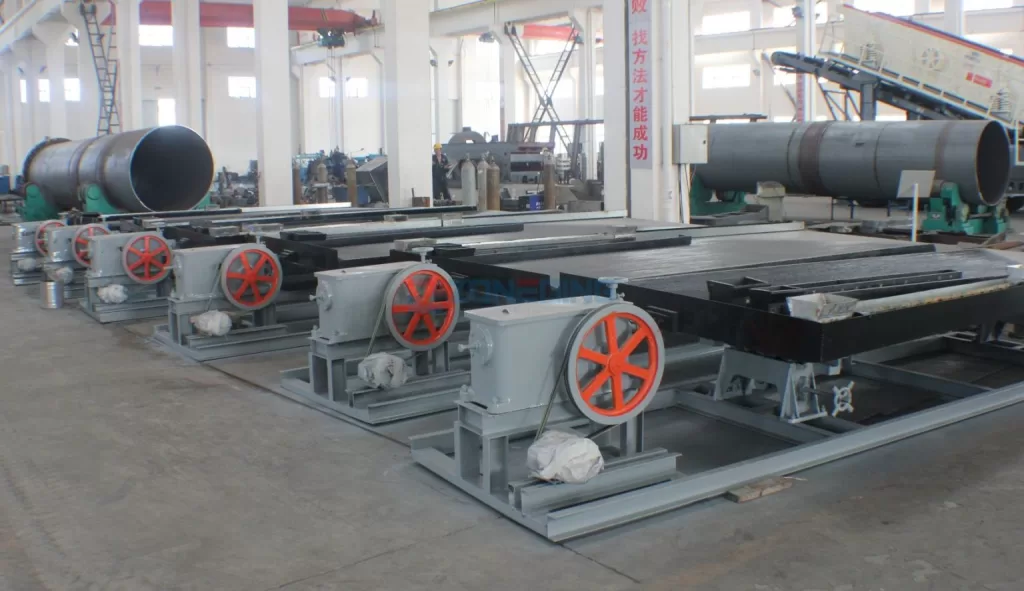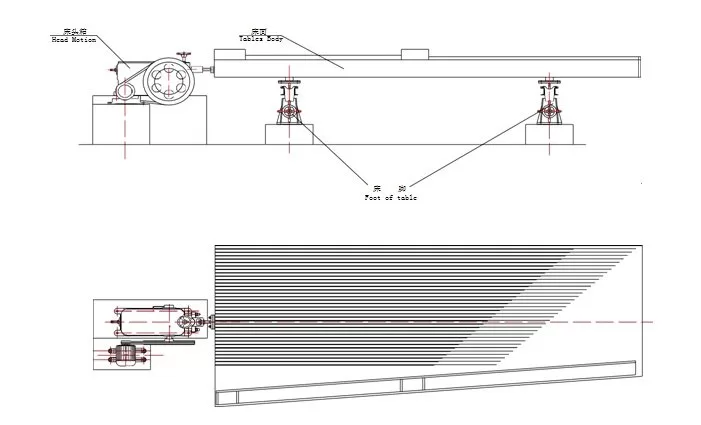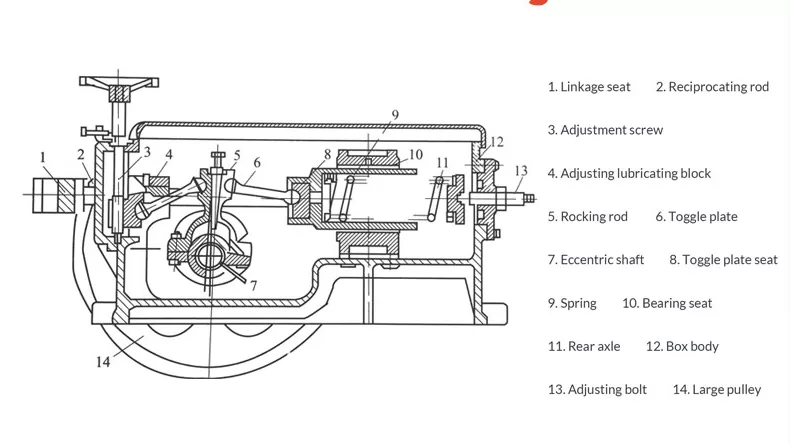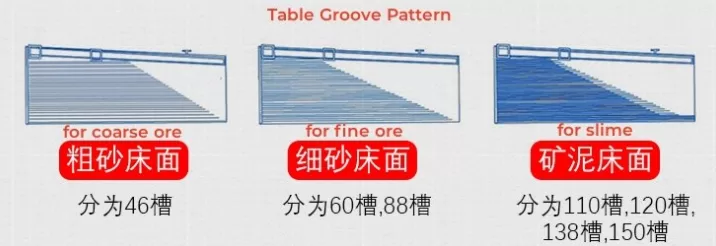全站搜索
Search the entire website
Search the entire website

Are you struggling with inefficient mineral separation, leaving valuable materials behind? Are you experiencing low recovery rates and high operating costs? This comprehensive guide will give all the details about shaking tables.
Shaking tables are gravity separation devices that separate minerals based on differences in their specific gravity. They are widely used in mineral processing for concentrating valuable minerals and have a very high efficiency.

Let’s move forward and take a deep look!
Are you facing challenges in separating minerals with subtle density differ
ences? Is your current separation process failing to achieve the desired purity levels? Let’s figure out what a shaking table exactly is.
A shaking table, also known as a concentrating table, is a gravity separation device that uses the combined action of a shaking deck, a film of flowing water, and differences in specific gravity to separate minerals.

A shaking table consists of a slightly inclined rectangular deck with a series of riffles (small, raised bars) running parallel to the length of the deck. The deck is mounted on a support mechanism that imparts a rapid, asymmetrical shaking motion.
The working principle can be broken down into these key steps:
| Feature | Description |
|---|---|
| Deck | Slightly inclined, rectangular surface with riffles. |
| Riffles | Small, raised bars that trap heavy particles and aid in stratification. |
| Shaking Motion | Asymmetrical, with a slow forward stroke and rapid backward stroke. |
| Water Flow | A thin film of water flows across the deck, carrying lighter particles over the riffles. |
| Separation | Minerals are separated based on specific gravity differences, forming distinct bands on the deck. |
| Drive Head | Provides the shaking movement required for mineral separation. |
| Feeding Chute | Materials are uniformly distributed from here to the table. |
| Wash Water Chute | Water supply required for the whole process. |
| Tilt Adjustment Device | The tilt of the table can be adjusted here. |
| Product Collection Area | After separation, different parts of the products are collected here. |
Industry Insider Tip: The “Lost Art” of Deck Tuning: Most manufacturers provide a standard shaking table setup. However, true optimization requires “tuning” the deck to the specific ore characteristics. This isn’t just about speed and stroke length (which are basic adjustments). It’s about subtly adjusting the riffle configuration and even the deck material itself. 90% of operators never touch these settings after the initial installation, leaving significant recovery on the table (literally!). This is a lost art, often requiring painstaking experimentation, but the payoff is huge.
Wondering about the different types of shaking tab
les available? Confused about which one is best suited for your specific application? Let’s check out the different types.
There are several types of shaking tables, generally categorized by their deck design and application. Common types include Wilfley tables, Gemini tables, and Deister tables, each having specific riffle patterns and operating characteristics.

Here’s a breakdown of the common types:
| Type of Table | Deck Design | Application | Key Features |
|---|---|---|---|
| Wilfley Table | Diagonal riffles | Wide range of particle sizes | Versatile, widely used. |
| Gemini Table | Herringbone riffles | Fine gold recovery | Excellent for recovering very fine particles. |
| Deister Table | Pools and riffles | Coal cleaning, sharp separations | Effective for applications requiring distinct separations. |
| Multi-Deck Tables | Several decks vertically | High throughput | Deal with a large amount of materials. |
Industry Pain Point: The Water Balance Delusion: Everyone talks about water flow rate, but few understand the critical importance of even water distribution. A common mistake is assuming that a high flow rate automatically means better separation. The secret? Use a distributor with multiple, adjustable outlets, and spend hours (yes, hours) meticulously adjusting each one to ensure a perfectly uniform sheet of water across the entire deck surface.
Struggling to separate specific minerals using other methods? Wondering if a shaking table could be the solution for your particular ore? Let’s see the target material!
Shaking tables are particularly effective for separating minerals with significant differences in specific gravity. They are commonly used for concentrating gold, tin, tungsten, tantalum, and other heavy minerals.

Here’s a more detailed look:
The advantages in these areas stem from the principle of gravity separation:
| Mineral | Specific Gravity | Reason for Shaking Table Use |
|---|---|---|
| Gold | 15.5-19.3 | High density, fine particle recovery, widely applicable in various gold ores. |
| Tin (Cassiterite) | 6.8-7.1 | Dense, effective separation from lighter gangue. |
| Tungsten | 7.0-7.5 | High density, responds well to gravity separation. |
| Tantalum/Niobium | 5.2-7.9 | Often occur together, separable due to density differences. |
| Other Heavy Minerals | Varies | Effective for minerals with significant density differences from gangue. |
Unique Perspective: Challenging the “Feed Consistency” Myth: Conventional wisdom says a perfectly consistent feed (in terms of particle size distribution and solids concentration) is essential. While consistency is helpful, I’ve found that a slightly fluctuating feed can sometimes improve separation, particularly with complex ores. Slight variations in density or particle size can create micro-disturbances that help break up this packing and liberate locked particles. This is counterintuitive, but I’ve seen it work in practice.
Overwhelmed by the various shaking table options available? Unsure about the key specifications and features to consider? Check these selection factors.
Choosing the right shaking table involves careful consideration of several factors, including the type of ore, particle size range, desired throughput, and available space.
%Shaking table selection criteria
Here are the key factors to consider:
| Factor | Considerations |
|---|---|
| Ore Characteristics | Specific gravity difference, particle size range, mineral liberation. |
| Capacity/Throughput | Tons per hour (TPH) of feed material, deck area. |
| Deck Design | Riffle pattern (diagonal, herringbone, etc.), deck material. |
| Space Availability | Footprint of the table, access for operation and maintenance. |
| Budget | Cost of the table, balance with performance and long-term value. |
Specific Application Scenario: The “Black Sand” Nightmare (and Solution): Many operations struggle with heavy black sands (magnetite, ilmenite) overwhelming the shaking table and burying the finer, valuable minerals. A common misuse is to simply increase the tilt of the deck to wash away the black sands. This is a mistake! The solution? A two-stage approach: Pre-Concentration and Deck Modification.
Concerned about the proper installation and setup of your shaking table? Unsure about the correct operating procedures to maximize performance? Here is the operation instruction.
Proper installation, commissioning, and operation are crucial for achieving optimal performance from a shaking table. This involves careful leveling, adjusting water flow, setting the stroke length and frequency, and monitoring the separation process.
Here’s a step-by-step guide:
| Step | Actions |
|---|---|
| Installation | Solid foundation, leveling, water connection, feed box installation. |
| Commissioning | Initial adjustments (stroke, frequency, tilt), water flow adjustment, test run. |
| Operation | Feed rate control, monitoring, splitter adjustment, regular inspection. |
Technical Detail: The “Why” Behind Stroke Length and Frequency: The key is the acceleration imparted to the particles. Higher frequency with a shorter stroke is generally best for fine particles. Lower frequency with a longer stroke is better for coarser particles. The ideal combination depends on the specific gravity difference between the valuable minerals and the gangue. This is why testing with your specific ore is crucial.
Worried about the maintenance requirements of a shaking table? Want to ensure a long and productive lifespan for your equipment? Learn about the maintenance.
Regular maintenance is essential for maintaining the performance and extending the life of a shaking table. Key maintenance points include deck inspection, riffle repair, lubrication of moving parts, and regular cleaning.
Here’s a detailed maintenance checklist:
| Maintenance Point | Actions |
|---|---|
| Deck Inspection | Regularly check for wear, grooves, or damage; focus on riffles. |
| Riffle Repair/Replacement | Repair or replace worn/damaged riffles; consider wear-resistant materials. |
| Lubrication | Lubricate moving parts according to manufacturer’s recommendations; use correct lubricant. |
| Cleaning | Regularly clean deck surface; use appropriate cleaning agents. |
| Drive Mechanism Maintenance | Inspect for loose bolts, worn bearings, etc.; address issues promptly. |
Long-Term Performance: The Deck is a Consumable (and its Material Matters): Shaking table decks wear out. Many operators treat the deck as a permanent fixture, neglecting to inspect it regularly for wear and tear. Consider the deck a consumable item, and budget for regular replacement. Furthermore, the deck material significantly impacts longevity. For highly abrasive ores, consider using a polyurethane deck instead of rubber.
Experiencing problems with your shaking table’s performance? Not sure how to diagnose and fix the issues? Let’s discuss common problems.
Common shaking table faults include poor separation, excessive vibration, uneven water distribution, and mechanical issues. Troubleshooting involves identifying the root cause and taking corrective action.
Here’s a troubleshooting guide:
| Fault | Possible Causes | Solutions |
|---|---|---|
| Poor Separation | Incorrect operating parameters, worn riffles, uneven water, incorrect feed. | Adjust parameters, repair/replace riffles, ensure even water, improve feed. |
| Excessive Vibration | Unbalanced drive, loose bolts, worn bearings, poor foundation. | Balance drive, tighten bolts, replace bearings, reinforce foundation. |
| Uneven Water Distribution | Blocked/damaged distributors, incorrect pressure, unleveled table. | Clean/replace distributors, adjust pressure, re-level table. |
| Mechanical Issues | Worn bearings, broken components, loose connections. | Replace parts, repair/replace components, tighten connections. |
| Low Recovery Rate | Too much wash water or incorrect table tilt Angle. | Adjust water input or tilt angle. |
| Concentrate Grade Too Low | Not enough wash water, not enough tilt angle. | Adjust water and tilt angle. |
Cost Consideration: Don’t Skimp on the Feed Preparation: The shaking table itself is a relatively small part of the overall plant cost. However, skimping on the feed preparation equipment (crushing, screening, classification) is a HUGE mistake that will dramatically impact the table’s performance and, consequently, your overall recovery and profitability.
Shaking tables are essential for efficient mineral separation, offering high recovery rates and precise control. By understanding their operation, maintenance, and troubleshooting, you can optimize your mineral processing and maximize profitability. Contact ZONEDING MACHINE today for expert advice.
Facing a choice between a ball mill and a rod mill? Feeling confused? It's very important to select the right grinding equipment. Ball mills and rod mills are both grinding equipment, but they differ in grinding media, mechanism, product size, ...
View details